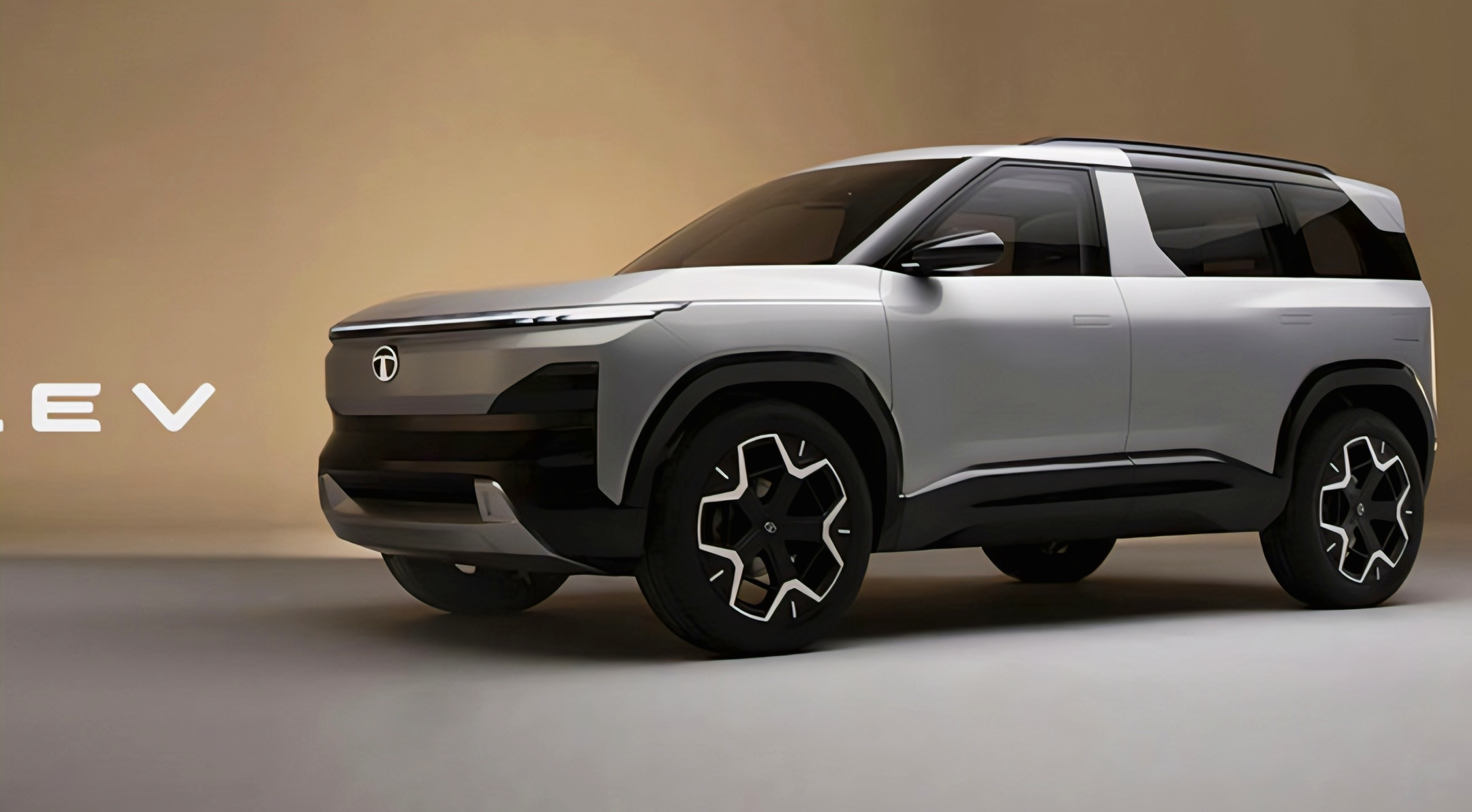
🌿 Introduction: The EV Game Has Officially Changed
Electric cars in India have long been treated like fragile experiments – good for city runs but hardly the stuff of dreams. That changes in 2025. Tata Motors, the company that already commands nearly 75% of India’s EV market share, has unleashed a true game-changer: the Tata Harrier.ev.
This isn’t just a “normal car converted into electric.” It’s built on Tata’s dedicated Gen2 EV architecture, loaded with high-tech features, powerful motors, dual battery options, and a cabin that feels like it was inspired by German luxury SUVs.
So why is the Harrier.ev such a big deal?
Because it’s finally that Indian SUV which combines serious performance, long highway range, rugged design, and all the tech you want in 2025. Let’s dive deep.
🚘 Bold Looks That Mean Business
(Image Suggestion: Front 3/4 view of the Harrier.ev in teal blue with DRLs on)
At first glance, the Harrier.ev might look like the popular diesel Harrier, but look closer:
✅ A closed-off EV grille gives it a futuristic, aerodynamic face.
✅ Sleeker LED DRLs and aggressive tri-arrow styling elements shout “tech-forward.”
✅ The wheels get special aerodynamic alloys that aren’t just for show – they help stretch your range by reducing drag.
✅ And since this is an EV with battery packs in the floor, it sits slightly higher, giving it a more commanding stance.
Whether it’s parked outside a fancy hotel or in your driveway, the Harrier.ev turns heads. Tata clearly wants it to be aspirational, not just practical.
⚡ Powertrains That Smash Old EV Stereotypes
(Image Suggestion: Harrier.ev AWD badge close-up)
The heart of the Harrier.ev isn’t just “good for an EV.” It’s good, period.
🏎️ Dual Motor AWD Performance
The top-end Harrier.ev gets two electric motors, one on each axle. This means:
0–100 km/h in about 6.3 seconds — that’s faster than many luxury ICE SUVs.
Combined output of 390 bhp & 504 Nm torque.
Instant torque gives you a thrilling pushback into your seat
This isn’t just about straight-line speed. Tata’s AWD system comes with multiple terrain modes (Snow, Mud, Sand, Rock, Normal, Sport). Planning to go up to Manali or take muddy roads in Kerala? This SUV will do it with quiet confidence.
🔋 Big Battery, Big Range
There are two battery options:
65 kWh (single motor RWD) – range up to 538 km.
75 kWh (AWD) – range up to 627 km.
This is among the highest claimed ranges by any Indian-made EV. For context, that’s nearly double the range of early Nexon EVs, and comfortably higher than many Korean EVs sold in In
⏱️ Fast Charging: Lunch Break Top-Ups
(Image Suggestion: Harrier.ev plugged into a DC charger, showing 120 kW on screen)
Range is only half the story. The Harrier.ev also charges super fast. Thanks to 120 kW DC fast charging, you can:
✅ Charge from 0-80% in ~25 minutes.
✅ Recover ~500 km of range in a coffee + snack break.
For home use, it supports AC charging up to 11 kW, meaning you can easily top it up overnight.
🏠 Cabin: Tech-Forward Comfort
Step inside the Harrier.ev and you’ll see why people call it a “poor man’s Audi.”
🔥 Big Tech Screens
A massive 14.5-inch Harman Neo QLED touchscreen takes center stage.
Ultra crisp resolution, fast processor, with split-screen for maps + media.
A 10.25-inch digital cockpit behind the steering keeps your speed, range & ADAS info in full view.
🎵 JBL Dolby Atmos
The SUV is loaded with a JBL audio system with Dolby Atmos.
It feels like a mini concert hall on wheels.
🛋️ Little Luxuries
Ventilated seats (both driver & co-passenger), wireless charging, multiple USB-C ports.
A giant panoramic sunroof, ambient lighting and soft-touch materials make it feel plush.
🛡️ Safety: ADAS & Bharat NCAP
Image Suggestion: Close-up of front sensors + ADAS camera)
Tata isn’t playing around with safety. The Harrier.ev gets:
✅ ADAS Level 2: Lane Keep Assist, Adaptive Cruise Control, Traffic Sign Recognition, Auto Emergency Braking.
✅ A robust build that already scored 5-star Bharat NCAP, matching Tata’s legacy of crash protection.
✅ 360-degree camera with terrain scan & parking auto-brake
🏞️ Practical Family SUV
EV skeptics worry about “space loss due to batteries.” Not here.
✅ Boot space is still healthy, thanks to smart underfloor packaging.
✅ The flat floor means rear passengers get more legroom, and the SUV feels airy due to large windows + sunroof.
💸 Pricing That Hits The Sweet Spot
Perhaps the most shocking bit? It’s not just reserved for millionaires.
Starts at ₹21.49 lakh ex-showroom (for base RWD).
AWD top-spec with every feature loaded goes up to ₹28.99 lakh.
Compare that to an XUV700 diesel or even a Creta top-end, and the Harrier.ev gives you:
More performance.
More tech.
More future-proofing.
🚦 The Ownership Case: Cost To Run & Maintain
Let’s be honest. One reason many still hesitate on EVs is “kitna kharcha hoga?”
With the Harrier.ev:
Running cost is ₹0.8–1 per km, compared to ₹7–9 per km for a diesel Harrier.
Maintenance is laughably low – no oil changes, no complex gearboxes. Just brake pads & coolant checks.
In 5 years, owners could save ₹3–5 lakh on fuel & service compared to a diesel SUV.
🛠️ Future-Proof: OTA Updates & AI
Image Suggestion: Dashboard showing over-the-air update screen)
The Harrier.ev comes with full OTA (over-the-air) software updates.
Tata is promising to add new features remotely, tweak ADAS calibrations, even optimize battery over time.
It’s a car that actually gets better while you own it.
🔍 Who Should Buy It?
The Harrier.ev isn’t a compromise EV. It’s for:
✅ Families who want a proper big SUV for highway trips.
✅ Tech enthusiasts who love big screens & smart features.
✅ Buyers tired of paying ₹6,000 for every diesel tank refill.
✅ People living in apartments with a society EV charger — your daily life becomes plug & go.